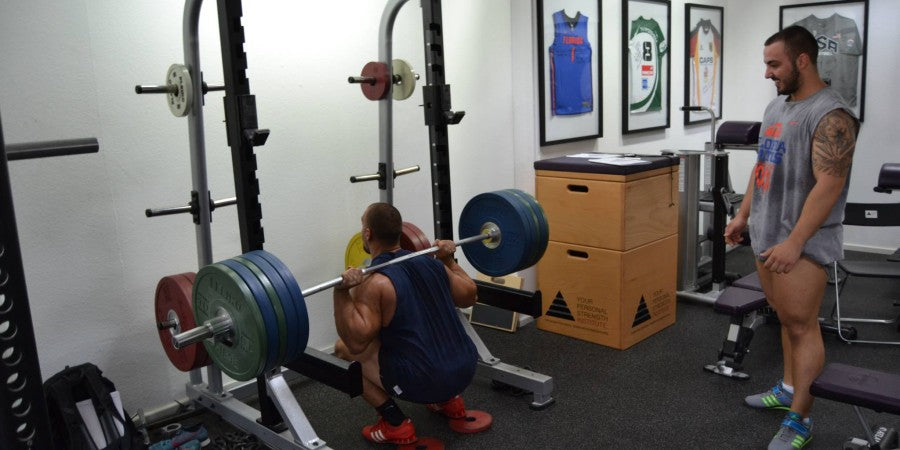Regularly I get asked why I regularly do recommend doing Back Squats with elevated heels….
Simple answer: Because this variation has its advantages….
3 Advantages of Back Squats with elevated heels
1. Increased Recruitment of the Vastus Medialis
Elevating the heels allows for knees to be further brought past your toes. Besides the increased recruitment of the Vastus Medialis, the elevation allows for an increased range of motion within the knee joint through greater dorsiflexion of the ankle, and thereby for a deeper squat – especially if the ankle mobility is restricted in early training phases. Therefore a good place to start for beginners with minimal strength training background.
3. Decreased Compression of the Lumbars
By elevating the heels, the torso will be in a more upright position. This decreases the compression of the lumbars and the recruitment of the Erector Spinae. This allows a higher training volume without overloading the lower back in athletes whose lumbar erectors aren’t conditioned yet – mainly in untrained athletes.
Squats with elevated heels are an excellent solution to improve mobility and flexibility in the ankle and hip joint and to optimize knee stability – especially in the beginning with untrained clients. Back Squats with flat heels does offer certain advantages as well
3 Advantages of Back Squats with flat heels
1. Increased posterior chain recruitment
Having your heels flat on the ground decreases the range of motion within your knee and thereby your quadriceps recruitment. This way you’ll recruit more fibers of the posterior chain – Erector Spinae, Gluteus and the Hamstrings- are recruited. This offers various advantages.
2. Heavier Loads
Through increasing posterior chain recruitment, squats with flat heels allow for heavier loads to be moved. This indirectly offers a positive effect on increasing power in any other exercise (radiation effect).
3. Increased carryover for sprinting and jumping-related sports
80% of an athlete’s Vertical Jump ability and short term Sprinting Speed are based on the power output of the Posterior Chain – consisting primarily of Erector Spinae, Gluteus and Hamstrings. Through increased posterior chain recruitment and a related increased training effect on the posterior chain, the squat with flat heels does provide the greater effect on Vertical Jump ability and short term Sprinting Speed – and thereby to the performance on the field or the ice.
Squats with flat heels are an excellent solution to increase Posterior Chain recruitment and Maximal Strength as well as the Power Output of the Posterior Chain which directly correlates to the Vertical Jump and short term Sprinting Speed.
We do recommend weightlifting shoes to every more advanced athlete. Besides providing dorsiflexion through the slightly elevated heel, the main benefit of weightlifting shoes is the increased stability. Weightlifting shoes do not replace elevating the heel through the use of small plates and the YPSI Squat Board.
Conclusion: Its not an either or question. The question is when do you use which variation of the Back Squat for maximal Progress.
Picture: YPSI Coach Goran Sirovina demonstrating a Back Squat with elevated heels.

